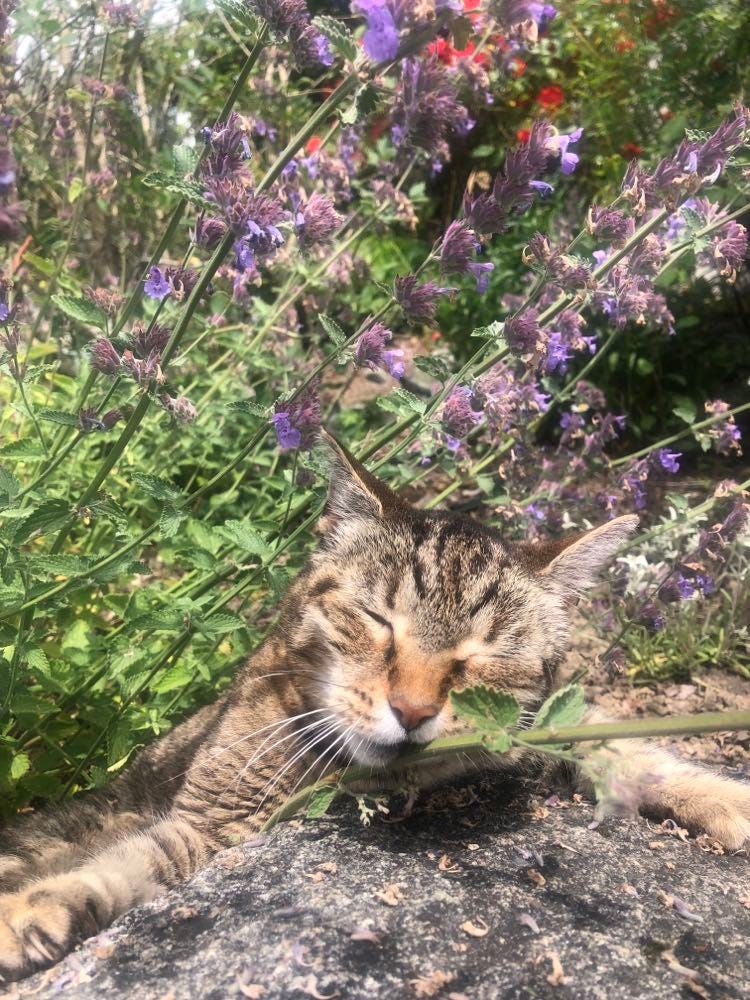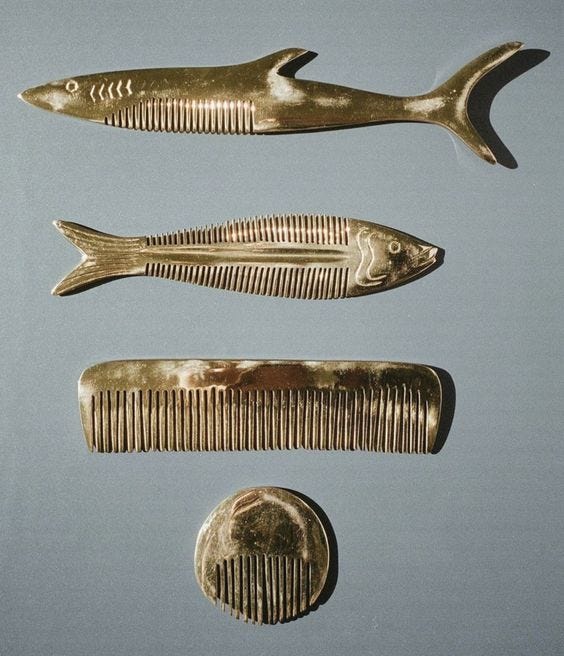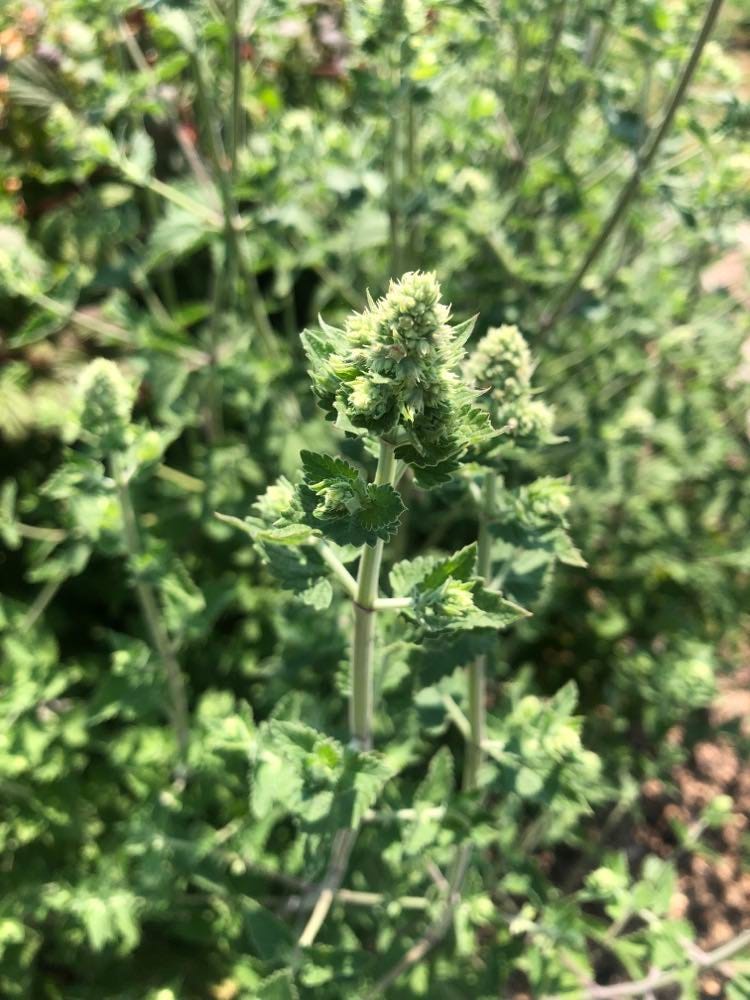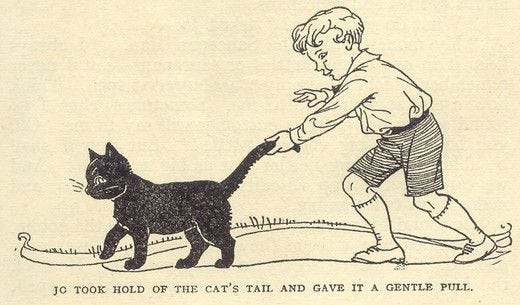Hello again, my dear readers! I hope everyone has had a glorious first week of summer. I dove into the season head first with ocean dips, river swims, sun warmed raspberries straight from the source, and leaving the house with just shorts and a t-shirt, no outer layer needed - the true sign of summer. This week I was housesitting for my parents up in the Cowichan Valley. It’s just been me, the dog, cat, chickens, sheep and cows. I kept saying I was alone but that’s actually quite the crew! Our family cat, Tibby, is a ripe sixteen years old, and loves summer. Her days consist of perusing the garden, napping in various spots, both sun drenched and shaded, and coming inside for a healthy dose of Temptations. This cycle is repeated upwards of 10 times a day; a rigorous schedule for an old cat. One of the simple pleasures in life is walking around the garden with her. I like to try to imagine things through her eyes. The fish pond and waterfall a scene from Jurassic Park, the bushy kale and chard a jungle. Seeing her out in the yard reminds me to slow down, stay curious, and above all be playful. She’s the inspiration for this week’s herb choice: catnip.
Catnip (Nepeta cataria) belongs to the mint family. Fun fact about the mint, or Lamaiaceae, family is that they all have square stems. So when in doubt break off the stem and if it’s square then it’s a type of mint! Catnip is native to the Mediterranean, as it was named after the ancient Etruscan city of Nepeti in the Roman Empire, where it was first cultivated, but is also native to dry and temperate parts of Asia and Africa. It has since been introduced to much of the world and can often be found easily in both gardens and the wild alike in North America. It’s common name, catnip, came from the clear attraction it drew from cats. From house cats to lions, it seems that all species of cats have an affinity for this herb, although the effects it brings about can vary. Some say that the scent of the plant will make cats hyper, but can chill a cat right out if they eat it. There’s an old saying about catnip that goes “if you set it the cats will eat it; if you sow it the cats won’t know it.” This definitely rings true as I brought a small start from my own plant to my boyfriend’s parent’s house, and their family cat quickly devoured it. So if you want to plant some in your garden and have a cat - get the seeds! Apparently the root makes cats (and people!) aggressive (lol). I might need to dig some up to prove that.

I’ve recently been learning about the Egyptian goddess, Bast. She is the cat goddess, usually depicted as a woman’s body with a cat’s head. She is a protector of the home, women’s health, and children, and is associated with fertility and women’s secrets. With catnip being, well, a cat centric herb, I like to think that it is the herb of Bast. So if you’re wanting to evoke some of that Bast energy perhaps catnip would be the perfect conductor to call her in. Who knows what other cats you might lure in with it!
Catnip has a long history as a traditional medicine in Europe, with the first written mention of it dating back to 11th century in the De viribus herbarum. As you read, it’s a type of mint, so it can be used in place of any other mint for things like digestion or relaxing tension. Catnip is calming, and in children acts as a mild sedative to promote sleep. It is actually a really great children’s herb because it is gentle, quite tasty, and incredibly soothing to both the stomach and the nervous system. The Cherokee considered catnip to be an overall strengthening tonic, and used it much the same as American folk medicine. Catnip, like other mints, is also a diaphoretic which means that it allows heat to leave the body, so this is a great herb for fevers or hot flashes. The energetics of catnip are mixed due to this. First it may feel warming, as the heat rises to the surface, but that will be followed by a sense of cool once the heat escapes. Overall, it is a cool and calm herb that has soo many uses. Bloating, gas, stomach upset of any kind, anxiety, butterflies in your stomach, heart burn, restlessness, tension, headaches, menstrual cramps, and on and on the list goes. Even infertility! 17th century herbalist extraordinaire, Nicholas Culpepper, recommended that barren women should take baths in a tea infusion of the herb. Likely everyone reading this could benefit from some catnip.
If you have access to a catnip plant and you’d like to harvest it it’s best to do so when in bloom. You can collect the leaves and flowers and either use them fresh or dry them. I tend to dry mine to use for infusions throughout the year, or to tincture (if you have children you could make a glycerite!). Herbalist Susun Weed talks about using catnip in herbal cigarettes to help with menstrual pain. You can also use it in cooking, like in salads, or soups. Basically anywhere you would use mint you could use catnip. Otherwise, you can buy the dried herb probably at any apothecary to make yourself some nice tea (or ask me cause I am about to have a huge stash)!
For me, catnip has such a light and playful energy. They say it’s a great herb for children, but for me it feels like a great herb for adults to connect to our inner child. I love getting lost in time out in the garden, playing with Tibby, both enveloping ourselves in the medicine of catnip. Since deciding to write about catnip a few days ago, I have randomly pulled down Enid Blyton’s The Magic Faraway Tree, a prominent book from my childhood that my mom used to read to me and my sister. Revisiting a book from childhood is a trip. It’s like real life time travel. Highly suggest this activity if you’d like to be transported.
Go out and find a cat to play with. Study their mischievous nature. Bring it some catnip! Herbalism can look like so many things. It’s a reconnecting of ourselves to the world around us. It’s the feeling of coming home.
Until next time,
Anika








